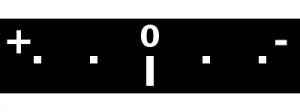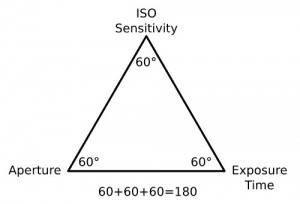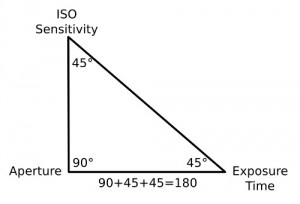A lot of people seem to struggle with the concept of exposure in photography. What is this about and what are the different ways to control it ? That’s what I’ll be covering in this photography tutorial. So, if you’ve got some problems with the notion of exposure, read on !
What is the exposure in photography ?
The exposure is the total amount of light received by the sensor. If the sensor doesn’t receive enough light, the picture will be underexposed. Conversely, if the sensor receives too much light, the picture will be overexposed.
Therefore, a correct exposure consists in providing enough light so that the picture won’t be overexposed or underexposed.
All modern SLRs have an exposure indicator that shows whether the picture is correctly exposed. The camera measures the light of the subject and, depending on the settings, shows where the exposure is on a line, telling you if it’s correctly exposed or over or underexposed.
For a correct exposure, the indicator must be in the middle of this line. If it’s on the left, the picture will be underexposed, and if it’s on the right, the picture will be overexposed. This gives you precious informations to which you should always be attentive.
Parameters influencing the exposure
Three parameters are used to control exposure :
– The aperture
– The shutter speed
– The ISO sensitivity
Each of these parameters has its own advantages and disadvantages. Quickly, and without going into details, here are the characteristics of each :
– The aperture : affects the depth of field. A large opening gives a shallow depth of field, and vice versa, a small opening gives a large depth of field.
– The shutter speed : affects the movement. High shutter speed freezes movement, and vice versa, a slow shutter speed gives motion blur.
– The ISO sensitivity : a low sensitivity requires a greater amount of light, while a high sensitivity requires less light but will introduce noise in the image.
Therefore we can compare the exposure to a triangle, each of the angles representing one of these parameters.
Remember your math class: the sum of the angles of a triangle is always 180 °. So, if we increase the size of one of the angles, it necessarily reduces the size of one or of the two other angles, and vice versa. Well, in photography, it’s exactly the same : for example, if I increase my shutter speed, so that the light can reach the sensor for a longer time, I will have to reduce my aperture and/or my ISO sensitivity to keep the same amount of light on my sensor in the end.
It’s not clear ? We will take another more practical example : let’s take the example of a tap and a container. Let’s say that a correct exposure corresponds to my filled container. In this example, my ISO sensitivity will be the container, the aperture will be the opening of the tap, so it’s flow, and my shutter speed will be the the time during which the tap is opened. I can therefore interact with my three parameters : I can change the size of my container, I can increase/decrease the time during which my tap is open and I can open my tap fully or just slightly.
Let’s say I’m decreasing the flow of my tap (aperture), what will be the consequence of this ? Well, to fill my container (correct exposure) I’ll have to :
– either let the water flow for a longer time (shutter speed) and keep the same container (ISO sensitivity)
– either decrease the size of my container (ISO sensitivity) and let the water flow for the same amount of time (shutter speed)
– or I can make a combination of the two : I increase slightly the time of the water flow and I decrease the size of my container.
Is it clearer like this ?
Let’s adapt this example of the tap to another parameter and let’s say that I choose to use a bigger container (therefore a lower ISO sensitivity). To fill my container, I’ll have to :
– either increase the water flow by opening my tap more and let it flow for the same amount of time.
– either let the water flow for a longer time and leave my flow as it is without modifying the opening of the tap.
– or I can increase slightly the flow by opening the tap and let the water flow a little bit longer.
Still using this example of the tap and the container, what will happen if I modify a parameter without adapting the other in return ?
Well, if I increase the flow parameter for example but leave the other parameters unchanged, letting the water flow for the same amount of time and keeping the same size of container, my container will overflow. This is the case where my picture will be overexposed, having received too much light.
Conversely, if I close a little bit my tap while letting the water flow for the same time and keeping my container’s size, my container won’t be fully filled. In this case, my picture will be underexposed, having not received enough light.
It will be the same with the other parameters . You need to know that when you change a parameter, it is necessary to adapt the other two accordingly to maintain an equivalent exposure. Be careful though : When I say that the exposure will be the same, I speak about the amount of light received by the sensor, the final result will of course vary depending on the different parameters settings !
Ok, that’s it about exposure in photography. I hope this tutorial has been of some use to you and has increased a little bit your knowledge in photography !



